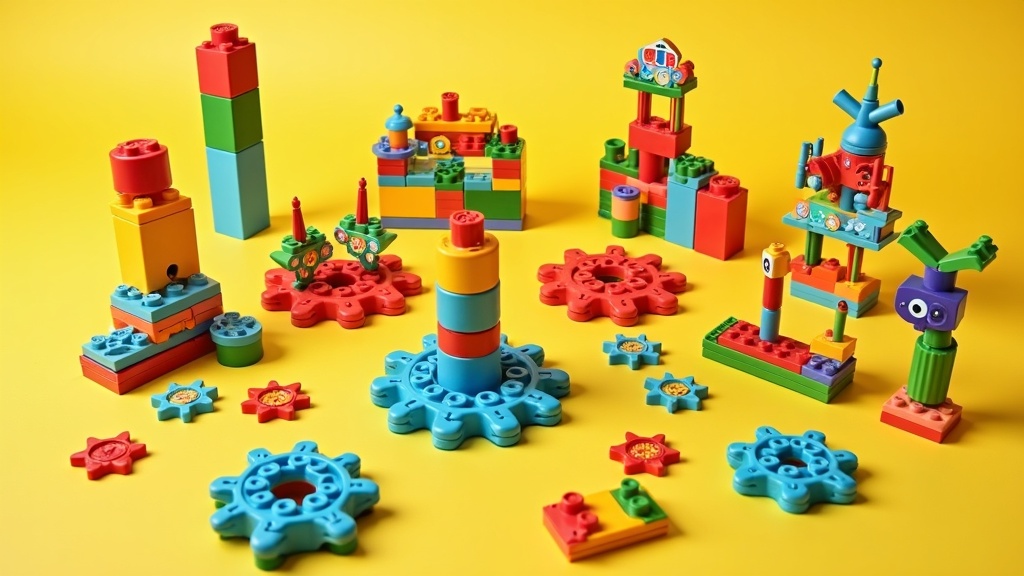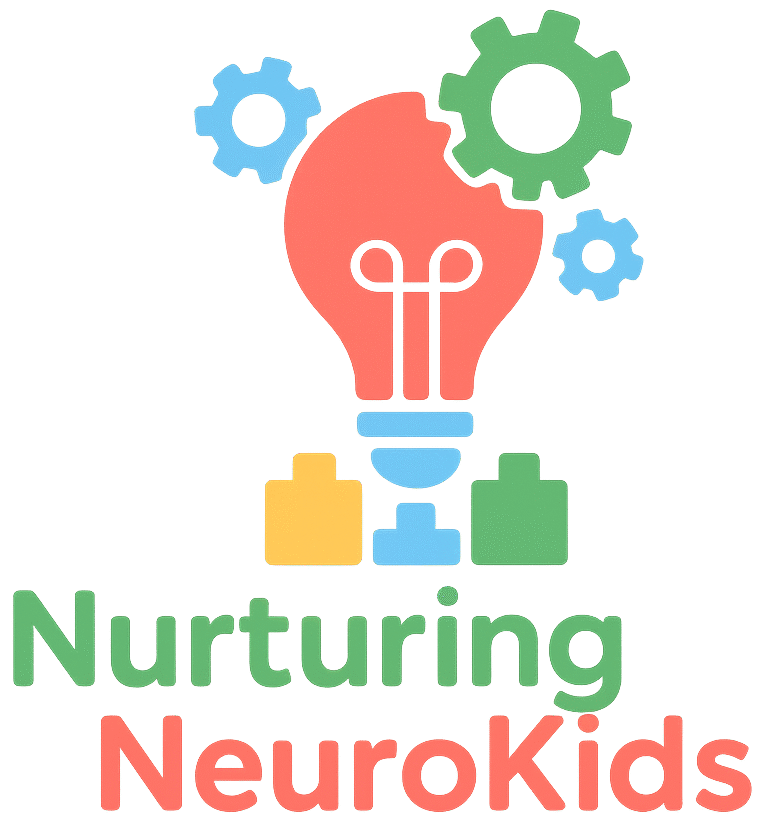STEM toys aren’t just colorful blocks or flashy science kits. They’re carefully designed to bring Science, Technology, Engineering, and Math (that’s what STEM stands for) into playtime. For neurodiverse kids—any child who thinks or processes the world a bit differently, like those with autism, ADHD, dyslexia, or sensory processing differences—STEM toys can be more than just fun. They’re practical gateways to learning, confidence, and social success. Here’s what you need to know about how these toys work, why they’re helpful, and what matters when finding the right fit for your child.

What Are STEM Toys and How Do They Work?
STEM toys are all about hands-on discovery. You’ll find toys that light up when you connect circuits, codewitharobot gaming kits, marble run mazes, and construction sets that don’t just build towers. They solve real challenges. These toys are made to spark curiosity and turn everyday play into little science experiments, engineering projects, or math problems, just disguised as pure fun.
Most STEM toys bring together real world skills children can use, like problem solving and critical thinking. For example, assembling a circuit kit lets kids practice sequencing steps and reading diagrams, building up their reasoning. Coding games teach logic and planning. Building sets promote spatial awareness and patience. Unlike toys that just ask kids to push a button and watch lights flash, STEM toys encourage kids to explore, tinker, and figure things out on their own pace and terms.
Why Are STEM Toys Valuable for Neurodiverse Kids?
Every child learns in their own way, and this is extra true for neurodiverse kids. Sometimes traditional classroom activities can be difficult, maybe due to language, unexpected noise, or inflexible routines. STEM toys offer a different approach, making learning feel safe, exciting, and adaptable to each kid’s strengths. Here’s why that’s so important:
- HandsOn Play: Many neurodiverse kids thrive when they can touch, build, and manipulate objects. STEM toys are naturally tactile and interactive, providing direct feedback as kids play.
- OpenEnded Exploration: There isn’t just one “right answer.” Building a bridge out of blocks can be done a hundred ways, and coding a robot can be as simple or complex as your child wants. This flexibility can lower anxiety and boost comfort for neurodiverse kids who struggle with rigid rules.
- Sensory Options: Some STEM toys work especially well for kids with sensory preferences. Think squishy building materials, textured gears, or marble runs that make soft, predictable sounds. For kids with sensory needs, these features can be calming and enjoyable.
- Builds Confidence and Skills: Success with STEM toys is all about experimenting and learning from mistakes. Kids get to see how things work step by step, giving them confidence to try again and solve problems creatively.
For neurodiverse kids, these benefits go beyond the toy box. Time spent playing and solving problems can help with fine motor skills, teamwork, focus, and even managing frustration.
Key Types of STEM Toys to Look For
Narrowing down the right toy can be tricky because there’s a lot out there. These categories are pretty handy when figuring out what could suit your child’s interests and needs:
- Building and Construction Sets: Classic favorites like magnetic blocks, gears, or marble runs. These let kids build, experiment, and tinker at their own pace.
- Robotics and Coding Kits: From robots that follow drawn lines to programmable games, these introduce logic, sequencing, and problemsolving through real play.
- Math Games and Puzzles: Board games, pattern blocks, and math based activities that turn numbers and counting into concrete, visual experiences.
- Science Kits: Projects that let kids safely mix, measure, and observe causeandeffect, like chemistry kits or growyourowncrystal sets.
I’ve seen even simple kits like stacking cups or connectthedots boards become powerful learning tools. The key is finding toys that can be used in openended ways, so kids feel successful no matter how they play.
Extra Benefits of STEM Toys for Neurodiverse Development
Along with all the classic advantages of play, STEM toys also offer benefits that apply directly to neurodiverse development. Here are a few I think are super important for supporting neurodiverse kids:
- Supports Executive Function: Many STEM toys encourage planning, working memory, and flexible thinking, all executive function skills that neurodiverse kids sometimes find tough. Step by step building or following programming sequences help strengthen these abilities naturally.
- Boosts Social Skills: Lots of STEM toys can be played with friends or family, promoting turn taking, collaboration, and communication. Cooperative projects can help kids practice teamwork in a low pressure way.
- Fosters Emotional Regulation: Completing a challenging build or figuring out a puzzle can give kids a sense of accomplishment. This often helps them learn to manage frustration and stick with tasks, building real resilience.
- Inspires RealWorld Connections: Science kits or engineering toys often relate to things kids see in their everyday lives, like bridges, buildings, or gadgets. This helps them feel more connected and informed about the world around them.
From experience, parents and therapists tell me that introducing STEM toys often leads to longer play sessions, stronger involvement, and new interests popping up—sometimes in unexpected ways. A child who struggles with handwriting might love working with tangram puzzles, or a kid who is anxious in groups might become a confident coder during robotics time.
What to Consider When Choosing STEM Toys for Neurodiverse Kids
Not all STEM toys work well for every child, especially for neurodiverse kids with unique needs or sensitivities. Here’s what I recommend keeping in mind:
- Skill Level and Interests: Find toys that match your child’s current abilities and interests. Too complex, and it’s frustrating. Too simple, and it becomes boring fast. Pay attention to packaging suggestions, but trust your own sense of what will keep your child involved.
- Flexibility and Adaptability: Toys that can be played with in many different ways are usually a hit. Openended sets let kids invent their own games and challenges, which is great for creativity and problemsolving.
- Sensory Features: Consider how a toy feels, sounds, or looks. Smooth, textured, soft, or weighted toys may be more appealing for certain kids. Watch for flashing lights or loud sounds if your child is sensitive to sensory overload.
- Instructions and Support: Look for toys with clear, visual instructions, and don’t be afraid to supplement with video guides if your child needs extra help. Some toys are designed with step by step cards or have apps that walk kids through activities at their own pace.
- Safety: Make sure the toy’s materials are sturdy and safe, especially for kids who might mouth objects or who need durable products that can withstand frequent handling.
Many families find it helpful to read reviews, watch unboxing videos, or ask therapists and teachers for suggestions tailored to their own child. Careful research helps buyers make informed decisions. Sometimes reaching out to support groups for neurodiverse families can also turn up great toy ideas that you won’t find in mainstream bestsellers lists.
RealLife Examples of STEM Toys Making an Impact
Based on stories I’ve heard and firsthand feedback, the right STEM toy can make a real difference. Here are a few examples:
- For Kids with Autism: Magnetic blocks and marble runs create predictable, soothing patterns for tactile and visual play. Parents mention these toys help with calm focus, offering a break from overstimulation.
- For Kids with ADHD: Fastpaced coding games and circuit snap kits let kids jump in and see immediate results, which keeps their attention longer. The ability to reset tasks helps manage frustration and teach coping strategies.
- For Kids with Dyslexia or Dyscalculia: Board games with numbers and visual math activities show abstract concepts in clearer, hands on ways, making numbers less intimidating and more approachable.
- For Sensory Processing Differences: Toys with squishy textures or gentle, rhythmic sounds can provide both stimulation and comfort. Weighted blocks or soft manipulative toys help kids manage anxiety while staying involved.
A lot of parents see children light up when they can learn through play, build confidence, and use toys as bridges to new skills or friendships. Teachers also share that a simple robot or science set used in a small group can bring nonverbal kids out of their shell, especially when they start showing other children how to play along.
Questions Parents Ask About STEM Toys for Neurodiverse Kids
Here are a few questions I hear a lot, along with what I usually share in response:
Question: What’s the best age to start with STEM toys?
Answer: There are STEM toys for toddlers all the way to teens. Many brands have age guides, but what matters most is choosing something interesting, safe, and pitched to your child’s current level.
Question: Do STEM toys require adult supervision?
Answer: Some kits or experiments (like basic chemistry sets) work best with an adult nearby, but most building sets are safe for solo or group play. I recommend checking manufacturer info and joining in the first few times; it’s a fun way to bond and build confidence.
Question: Where can I find STEM toys for neurodiverse kids?
Answer: Many online stores have sections for sensory friendly or adaptive play options, and specialty websites offer curated lists based on age, developmental skill, or diagnosis. Reading reviews from other parents of neurodiverse kids can also help narrow choices. Don’t overlook local toy stores with knowledgeable staff who might have unique finds.
Bringing STEM Toys Into Your Child’s Play
Adding STEM toys isn’t about making every moment a lesson. It’s about giving neurodiverse kids real chances to play, explore, and stumble upon their own strengths and passions. The right toy can inspire questions, encourage trying new things, and give kids the freedom to learn how they learn best. If you’re looking for ways to support your child’s growth with playful learning, STEM toys are definitely worth checking out. You never know when a simple building set or a quirky science project will open a whole new world for your child.
